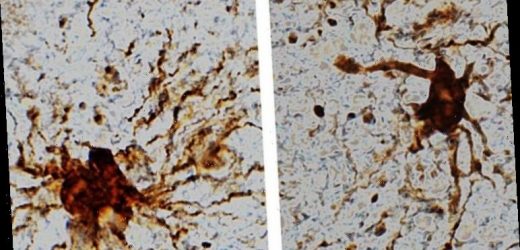Why Bath Salt drug turns people into cannibalistic zombies
When you subscribe we will use the information you provide to send you these newsletters.Sometimes they’ll include recommendations for other related newsletters or services we offer.Our Privacy Notice explains more about how we use your data, and your rights.You can unsubscribe at any time.
Zombies are among the most prolific monsters to grace our pop culture-references thanks in no small part to George Romero’s 1968 classic, Night of the Living Dead. The undead are virtually everywhere today, from our TV screens to our Halloween costumes, but thankfully, they are nowhere to be found in the real world – or are they? A new study published on Tuesday in the journal Scientific Reports has identified a gene expression that appears to come to life after a person has died.
In the hours that follow death, a number of cells in the human brain still shows bursts of activity.
Researchers at the University of Illinois, Chicago (UIC) have now found some of these cells can, remarkably, become even more active and swell to enormous sizes.
In their newly published paper, the UIC scientists have determined the activity is the result of a particular gene expression that increases after death.
These “zombie genes” were identified in fresh brain tissue samples collected during routine brain surgeries.
The researchers then analysed the gene expression at various intervals to simulate the post-mortem interval (PMI) – time that has elapsed since death.
Does this mean scientists have found a way to revive the dead? The answer is no.
Instead, they found the genes were specific to one type of cell: so-called glial cells.
Glial cells are an inflammatory type of cell that swelled in size and sprouted long tendrils, even many hours after death.
Dr Jeffrey Loeb, the John S. Garvin Professor and head of neurology and rehabilitation at the UIC College of Medicine and study author, said: “That glial cells enlarge after death isn’t too surprising given that they are inflammatory and their job is to clean things up after brain injuries like oxygen deprivation or stroke.”
According to the expert, the study has many big implications for research using dead brain tissue.
NASA exposes ‘zombie’ worlds inhabiting our Milky Way galaxy
In particular, Dr Loeb said, studies that seek out cures for disorders like schizophrenia and Alzheimer’s disease do not account for the post-mortem cell activity.
He said: “Most studies assume that everything in the brain stops when the heart stops beating, but this is not so.
“Our findings will be needed to interpret research on human brain tissues. We just haven’t quantified these changes until now.”
About 80 percent of the studied genes remained stable for 24 hours after death and their expressions did not change much.
These included so-called household genes and neuronal genes involved in brain activity linked to memory and thinking.
The “zombie genes”, however, peaked in activity about 12 hours after death, becoming more active about the same time neuronal genes were waning.
DON’T MISS…
UK braced for ‘space war’ as Russia fires fearsome weapon [INSIGHT]
Aliens: Advanced species might want to destroy humanity – scientist [REPORT]
Nostradamus predictions for 2021: Are zombies coming in 2021? [ANALYSIS]
Dr Loeb said: “Our findings don’t mean that we should throw away human tissue research programmes, it just means that researchers need to take into account these genetic and cellular changes, and reduce the post-mortem interval as much as possible to reduce the magnitude of these changes.
“The good news from our findings is that we now know which genes and cell types are stable, which degrade, and which increase over time so that results from postmortem brain studies can be better understood.”
A zombie apocalypse may not be entirely out of the question, however.
A study at the University of California has examined the power of the toxoplasmosa gondii.
The parasite is known to affect the brains of rodents, manipulating their behaviours to extreme levels.
For instance, the parasite can stop rats from running away from cats in the hopes of jumping to a new host.
Scientists were, consequently, interested in learning whether something similar could happen to humans.
Wendy Ingham, who was involved in the study, said: “The idea that this parasite knows more about our brains than we do, and has the ability to exert desired change in complicated rodent behaviour, is absolutely fascinating.
“Toxoplasma has done a phenomenal job of figuring out mammalian brains in order to enhance its transmission through a complicated life cycle.”
Should a zombie outbreak ever occur, experts at the US Centers for Disease Control and Prevention are prepared.
A guide published on the CDC’s website explains everything you will need to do to protect yourself and your closest loved ones.
The Preparedness 101: Zombie Apocalypse guide reads: “You may laugh now, but when it happens you’ll be happy you read this, and hey, maybe you’ll even learn a thing or two about how to prepare for a real emergency.”
Source: Read Full Article






